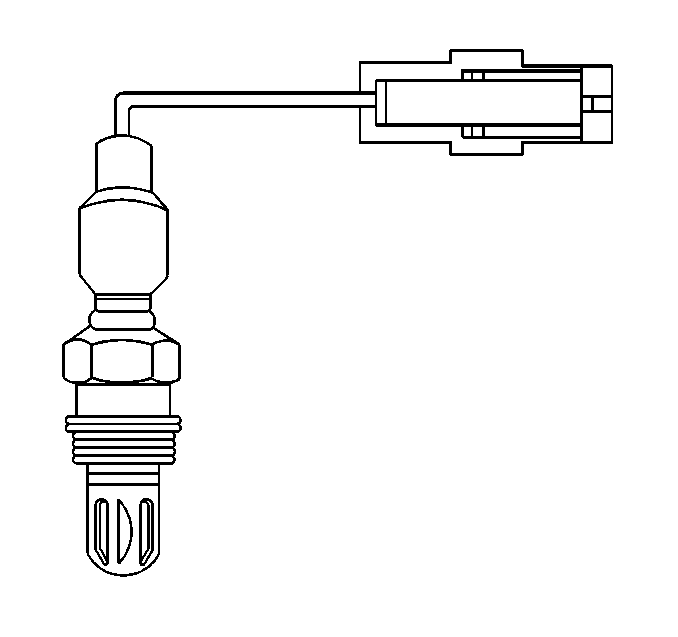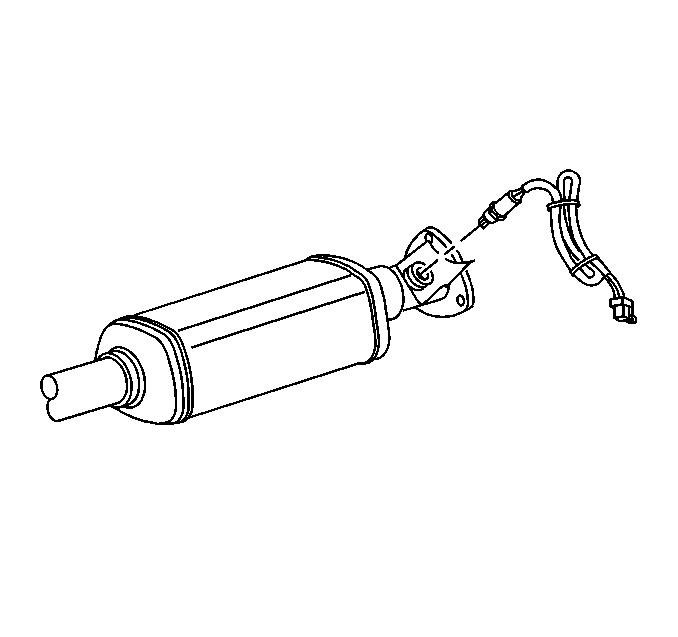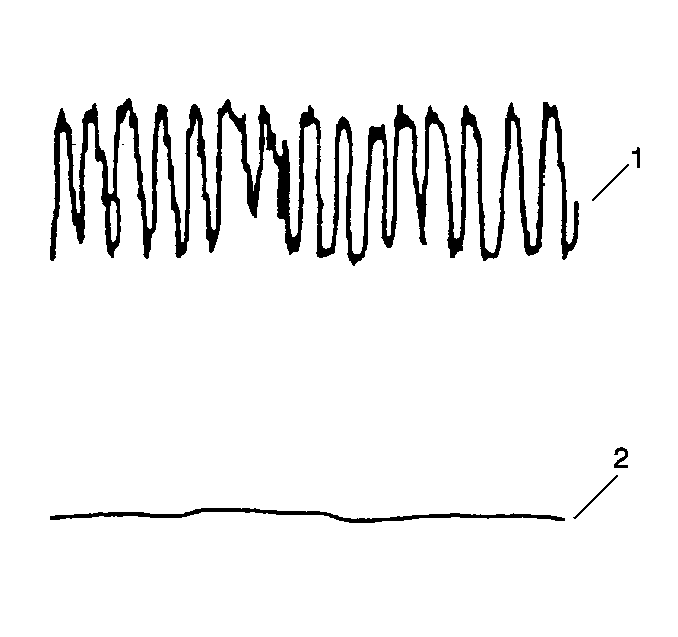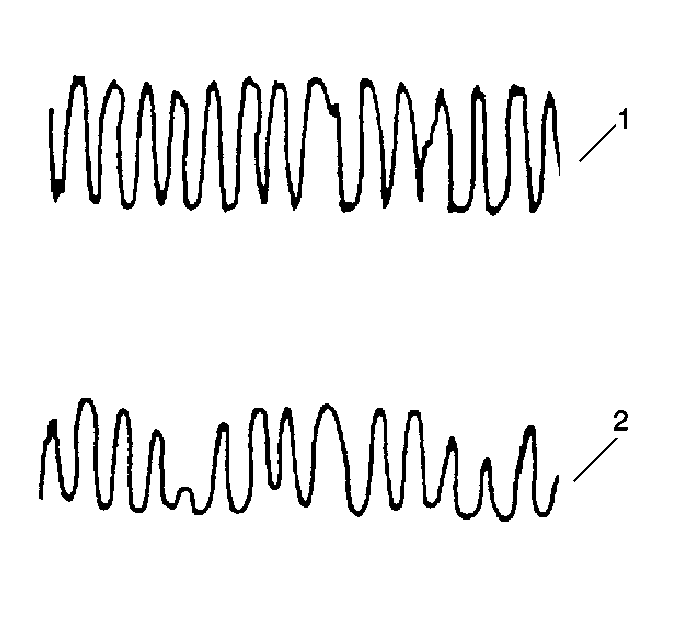Powertrain Control Module (PCM)

The powertrain control module (PCM) is the control center of the engine controls system. The PCM constantly looks at the information from various sensors, and controls the systems that affect emissions or engine performance. The PCM also performs the diagnostic function of the system. The PCM can recognize operational problems, alert the driver through the malfunction indicator lamp (MIL), and store a diagnostic trouble code (DTC) or DTCs which identify the problem areas in order to aid the technician in making repairs.
EEPROM
This assembly contains the functions of the electrically erasable programmable read only memory (EEPROM) and is a permanent part of the PCM. The EEPROM contains the calibrations needed for a specific vehicle applications and is serviced only through a re-programming procedure.
PCM Function
The powertrain control module (PCM) supplies either 5 or 12 volts to power various sensors or switches. This is done through resistances in the PCM which are so high in value that a test light will not light when connected to the circuit. In some cases, even an ordinary shop voltmeter will not give an accurate reading because its resistance is too low. Therefore, a 10 megohm input impedance digital voltmeter is required to assure accurate voltage readings.
The powertrain control module (PCM) controls most components with electronic switches which complete a ground circuit when turned ON. These switches are arranged in groups of 4 and 7, called either a surface mounted quad driver module (QDM), which can independently control up to 4 outputs, PCM terminals, or output driver modules (ODM)s, which can independently control up to 7 outputs. Not all outputs are always used.
Control Module Service Precautions
The control module is designed to withstand the normal current draws that are associated with the vehicle operations. Avoid overloading any circuit. When testing for opens or shorts, do not ground any of the control module circuits unless instructed. When testing for opens or shorts, do not apply voltage to any of the control module circuits unless instructed. Only test these circuits with J 39200 digital multimeter (DMM), while the control module electrical connectors remain connected to the control module.
Aftermarket (Add-On) Electrical And Vacuum Equipment
The aftermarket (add-on) electrical and vacuum equipment is defined as any equipment that is installed on a vehicle after leaving the factory that connects to the electrical or vacuum systems of the vehicle. No allowances have been made in the vehicle design for this type of equipment.
Notice: Do not attach add-on vacuum operated equipment to this vehicle. The use of add-on vacuum equipment may result in damage to vehicle components or systems.
Notice: Connect any add-on electrically operated equipment to the vehicle's electrical system at the battery (power and ground) in order to prevent damage to the vehicle.
The add-on electrical equipment, even when installed to these strict guidelines, may still cause the powertrain system to malfunction. This may also include any equipment which is not connected to the electrical system of the vehicle such as portable telephones and radios. Therefore, the first step in diagnosing any powertrain problem is to remove all of the aftermarket electrical connections from the vehicle. After this is done, if the problem still exists, diagnose the problem in the normal manner.
Electrostatic Discharge Damage
Notice: In order to prevent possible Electrostatic Discharge damage to the PCM, Do Not touch the connector pins or the soldered components on the circuit board.
The electronic components used in the control systems are often designed in order to carry very low voltage. The electronic components are susceptible to damage caused by electrostatic discharge. Less than 100 volts of static electricity can cause damage to some electronic components. There are several ways for a person to become statically charged. The most common methods of charging are by friction and by induction. An example of charging by friction is a person sliding across a car seat. Charging by induction occurs when a person with well insulated shoes stands near a highly charged object and momentarily touches ground. Charges of the same polarity are drained off, leaving the person highly charged with the opposite polarity. Static charges can cause damage. Use care when handling and testing the electronic components.
Engine Controls Information
The engine controls information describes the function and operation of the control module. The emphasis is placed on the diagnosis and repair of problems related to the system.
Engine components, wiring diagrams, and diagnostic tables (DTCs):
| • | The component locations |
| • | The wiring diagrams |
| • | The control module terminal end view and terminal definitions |
| • | The OnBoard Diagnostic (OBD) System Check |
| • | The diagnostic trouble code (DTC) tables |
The component system includes the following items:
| • | The component and circuit description |
| • | The on-vehicle service for each sub-system |
| • | The functional checks with the diagnostic tables |
| • | How to use electrical systems diagnostic information |
The DTCs also contain the diagnostic support information containing the circuit diagrams, the circuit or the system information, and helpful diagnostic information.
Maintenance Schedule
Refer to the General Motors Maintenance Schedule in Maintenance and Lubrication for the maintenance that the owner or technician should perform in order to retain emission control performance.
Visual and Physical Underhood Inspection
Perform a careful visual and physical underhood inspection when performing any diagnostic procedure or diagnosing the cause of an emission test failure. This can often lead to repairing a problem without further steps. Use the following guidelines when performing a visual and physical inspection:
| • | Inspect all of the vacuum hoses for the following conditions: |
| - | Correct routing |
| - | Pinches |
| - | Cuts |
| - | Disconnects |
| • | Inspect the hoses that are difficult to see beneath the air cleaner, the A/C compressor, the generator, etc. |
| • | Inspect all of the wires in the engine compartment for the following items: |
| - | Proper connections |
| - | Burned or chafed spots |
| - | Pinched wires |
| - | Contact with sharp edges |
| - | Contact with hot exhaust manifolds |
This visual and physical inspection is very important. Perform the inspection carefully and thoroughly.
Basic Knowledge Of Tools Required
Notice: Lack of basic knowledge of this powertrain when performing diagnostic procedures could result in incorrect diagnostic performance or damage to powertrain components. Do not attempt to diagnose a powertrain problem without this basic knowledge.
A basic understanding of hand tools is necessary in order to effectively use this information.
System Status and Drive Cycle For Satisfying the Federal Inspection/Maintenance (I/M 240) Regulations
The System Status selection is included in the scan tool System Info menu.
Several states require that the I/M 240 pass on-board tests for the major diagnostics prior to having a vehicle emission inspection. This is also a requirement in order to renew license plates in some areas.
Using a scan tool, the technician can observe the System Status, which will display as complete or not complete, in order to verify that the vehicle meets the criteria which complies with local area requirements. Using the System Status display, any of the following systems or a combination of the systems may be monitored for I/M Readiness:
| • | The catalyst |
| • | The HO2S |
| • | The HO2S heater |
Important: The System Status display indicates only whether or not the test has been completed. The System Status display does not necessarily mean that the test has passed. If a Failed Last Test indication is present for a DTC associated with one of the above systems, that test is failed and diagnosis and repair is necessary in order to meet the I/M 240 requirement. Verify that the vehicle passes all of the diagnostic tests associated with the displayed System Status prior to returning the vehicle to the customer. Refer to the Typical OBD II Drive Cycle table to use as a guide to complete the I/M 240 System Status tests. More than one drive cycle may be needed.
Following a DTC info clear, the System Status will clear only for the systems affected by any DTCs that are stored. Following a battery disconnect or a Control Module replacement, all of the System Status information will clear.
Diagnostic Time Schedule for I/M Readiness | |
|---|---|
Vehicle Drive Status | What is Monitored? |
Cold Start, coolant temperature less than 50°C (122°F) | -- |
Idle 2.5 minutes in Drive (Auto) Neutral (Man), A/C and rear defogger ON | HO2S Heater, Misfire, Secondary Air, Fuel Trim, EVAP Purge |
A/C off, accelerate to 90 km/h (55 mph), 1/2 throttle. | Misfire, Fuel Trim, Purge |
3 minutes of Steady State - Cruise at 90 km/h (55 mph) | Misfire, Secondary Air, Fuel Trim, HO2S, EVAP Purge |
Clutch engaged (Man), no braking, decelerate to 32 km/h (20 mph) | Fuel Trim, EVAP Purge |
Accelerate to 90-97 km/h (55-60 mph), 3/4 throttle | Misfire, Fuel Trim, EVAP Purge |
5 minutes of Steady State Cruise at 90-97 km/h (55-60 mph) | Catalyst Monitor, Misfire, Fuel Trim, HO2S, EVAP Purge |
Decelerate, no breaking. End of Drive Cycle | EVAP Purge |
Total time of OBD II Drive Cycle 12 minutes | -- |
Primary System Based Diagnostics
There are primary system-based diagnostics which evaluate the system operation and their effect on vehicle emissions. The primary system-based diagnostics are listed below, with a brief description of the diagnostic functionality.
Oxygen Sensor Diagnosis
Diagnose the fuel control oxygen sensors (O2S) for the following conditions:
| • | A slow response |
| • | Response time, time to switch R/L or L/R |
| • | An inactive signal, output steady at bias voltage--approximately 450 mV |
| • | A signal fixed high |
| • | A signal fixed low |
Diagnose the catalyst monitor heated oxygen sensors (HO2S) for the following functions:
| • | Heater performance, time to activity on cold start |
| • | Signal fixed low during steady state conditions or power enrichment--hard acceleration when a rich mixture should be indicated |
| • | Signal fixed high during steady state conditions or decel fuel mode, deceleration when a lean mixture should be indicated |
| • | Inactive sensor, output steady at approximately 438 mV |
Fuel Control Oxygen Sensors (O2S)

The main function of the fuel control heated oxygen sensor is to provide the control module with exhaust stream information in order to allow proper fueling and to maintain emissions within the mandated levels. After the sensor reaches the operating temperature, the sensor generates a voltage inversely proportional to the amount of oxygen present in the exhaust gases.
The control module uses the signal voltage from the fuel control heated oxygen sensors in a Closed Loop in order to adjust the fuel injector pulse width. While in Closed Loop, the control module can adjust fuel delivery in order to maintain an air-to-fuel ratio which allows the best combination of emission control and driveability.
If the oxygen sensor pigtail wiring, connector or terminals are damaged, replace the entire oxygen sensor assembly. Do not attempt to repair the wiring, the connector, or the terminals. In order for the sensor to function properly, the sensor must have a clean air reference provided. This clean air reference is obtained by way of the oxygen sensor wires. Any attempt to repair the wires, the connectors or the terminals could result in the obstruction of the air reference. Any attempt to repair the wires, the connectors or the terminals could degrade the oxygen sensor performance.
HO2S Heater

The oxygen sensor heaters are required by catalyst monitor sensors to maintain a sufficiently high temperature which allows accurate exhaust oxygen content readings further from the engine.
Catalyst Monitor Heated Oxygen Sensors (HO2S)
In order to control emissions of hydrocarbons (HC), carbon monoxide (CO), and oxides of nitrogen (NOx), the system uses a three-way catalytic converter. The catalyst within the converter promotes a chemical reaction which oxidizes the HC and CO present in the exhaust gas, converting them into harmless water vapor and carbon dioxide. The catalyst also reduces NOx, converting it to nitrogen.
The control module has the ability to monitor this process using the heated oxygen sensors (HO2S). The HO2S produces an output signal which indicates the oxygen storage capacity of the catalyst, this in turn indicates the catalyst's ability to convert exhaust gases efficiently. If the catalyst is operating efficiently, the O2S signal will be far more active than that produced by the HO2S.
Catalyst Monitor Diagnostic Operation
The OBD II catalyst monitor diagnostic measures oxygen storage capacity. In order to do this, the heated sensors are installed before and after the three-way catalyst (TWC). The voltage variations between the sensors allow the control module to determine the catalyst emission performance.
As a catalyst becomes less effective in promoting chemical reactions, the capacity of the catalyst to store and release oxygen generally degrades. The OBD II catalyst monitor diagnostic is based on a correlation between conversion efficiency and oxygen storage capacity.
A good catalyst, which operates at approximately 95 percent hydrocarbon conversion efficiency, shows a relatively flat output voltage on the post-catalyst heated oxygen sensor (HO2S). A degraded catalyst, which may operate at approximately 65 percent hydrocarbon conversion, shows a greatly increased activity in output voltage from the post catalyst HO2S.
The post-catalyst HO2S 2 is used to measure the oxygen storage and release capacity of the catalyst. A high oxygen storage capacity indicates a good catalyst. Low oxygen storage capacity indicates a failing catalyst. The TWC, the HO2S 2, and the HO2S 3 must be at operating temperature in order to achieve correct oxygen sensor voltages like those shown in the post-catalyst HO2S 3 outputs graphic.
The catalyst monitor diagnostic is sensitive to the following conditions:
| • | Exhaust leaks |
| • | HO2S contamination |
| • | Alternate fuels |
Exhaust system leaks can lead to the following results:
| • | Prevent a degraded catalyst from failing the diagnostic |
| • | Cause a false failure for a normally functioning catalyst |
| • | Prevent the diagnostic from running |
Some of the contaminants that may be encountered are phosphorus, lead, silica, and sulfur. The presence of these contaminants prevents the TWC diagnostic from functioning properly.
Three-Way Catalyst Oxygen Storage Capacity

The control module must monitor the three-way catalyst (TWC) system for efficiency. In order to accomplish this, the control module monitors the pre-catalyst and post-catalyst oxygen sensors. When the TWC is operating properly, the post-catalyst (2) oxygen sensor will have significantly less activity than the pre-catalyst (1) oxygen sensor. The TWC stores the oxygen as needed during the normal reduction and oxidation process. The TWC releases oxygen as needed during the normal reduction and oxidation process. The control module calculates the oxygen storage capacity using the difference between the pre-catalyst and post-catalyst oxygen sensor voltage levels.

Whenever the voltage levels of the post-catalyst (2) oxygen sensor nears the voltage levels that of the pre-catalyst (1) oxygen sensor, the efficiency of the catalyst is degraded.
Stepped or staged testing levels allow the control module to statistically filter the test information. This prevents falsely passing or falsely failing the oxygen storage capacity test. The calculations performed by the On-Board Diagnostic System are very complex. For this reason, do not use post catalyst oxygen sensor activity in order to determine the oxygen storage capacity unless you are directed to do this by the service information.
Three stages are used in order to monitor catalyst efficiency. Failure of the first stage indicates that the catalyst requires further testing in order to determine catalyst efficiency. Failure of the second stage indicates that the catalyst may be degraded. The third stage then looks more closely at the inputs from the pre and post O2S before determining if the catalyst is indeed degraded. This further statistical processing is done in order to increase the accuracy of the oxygen storage capacity type monitoring. Failing the first (stage 0) or the second (stage 1) test DOES NOT indicate a failed catalyst. The catalyst may be marginal or the fuel sulfur content could be very high.
Aftermarket HO2S characteristics may be different from the original equipment manufacturer sensor. This may lead to a false pass or a false fail of the catalyst monitor diagnostic. Similarly, if an aftermarket catalyst does not contain the same amount of cerium as the original part, the correlation between oxygen storage and conversion efficiency may be altered enough to set a false DTC.
Fuel Tank Pressure Sensor
EVAP Control System Overview

